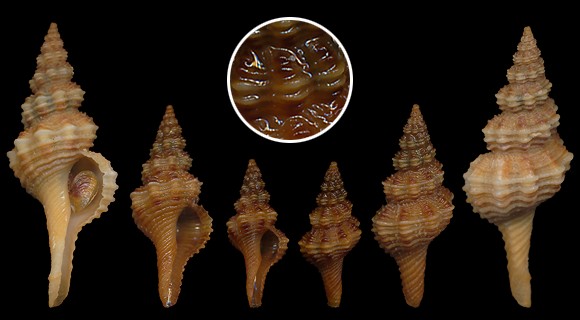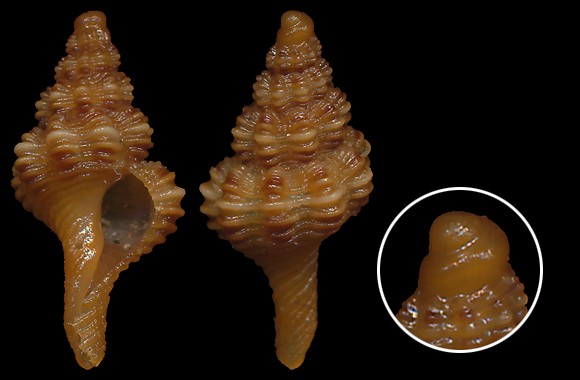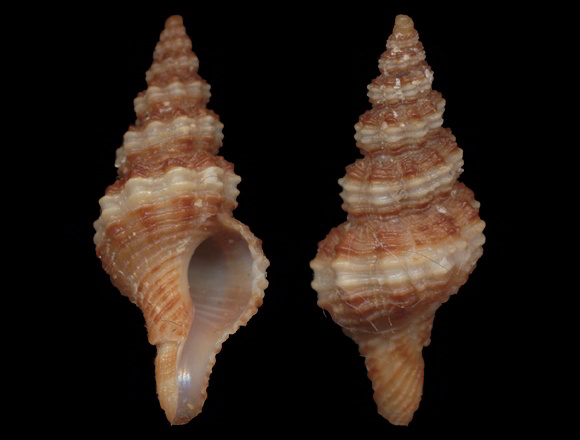(Philippi, 1844)

Predator in the infralittoral-circalittoral, on various bottoms. Original taxon: Fusus pulchellus. Synonyms: adustus and philippii. 40-50m deep, Málaga, Andalucia, S. Spain. 40-47mm.

In mud at 45m deep, off Barcelona, Catalunya, NE. Spain.
16-29,5mm.

« Shell fairly slender, spindle-shaped, with a turreted spire and a short, curved tail, rather thin-walled; whorls 8-9, very convex, but not angular, sculpted with projecting concentric ribs, which are separated by broad, relatively even interspaces; among the rather close-fitting, sharp spiral ridges, the two middle ones are slightly stronger, projecting like keels, and always white in color. Aperture small, oval, quite as long as the curved narrow canal; the columella is almost undetectable, the parietal callous always weak. The colour is characteristic, pale brown-yellow with a white middle banding, the ribs on both sides of the banding intensely reddish-brown. » – Kobelt p.56.

off Almería, Andalucia. 10mm. A very variable species.

14-14,5mm.

comparison between a juvenile Pseudofusus pulchellus with its two pale ribs on the shoulder (center - 6,5mm) and a young Pollia scabra (sides - 7,5mm - 1 pale rib on the shoulder).

It differs from pulchellus in having a slightly larger white band on the periphery: it goes a little beyond the two peripheral spirals, beginning a little posteriorly the adapical one and finishes slightly anteriorly the abapical one. The background colour is more uniform, while pulchellus bears marked darkenings of the costae; the radial sculpture is also stronger in pulchellus, the siphonal canal longer and less open.
22m deep, off Armação da Pêra, Algarve. 19mm.
